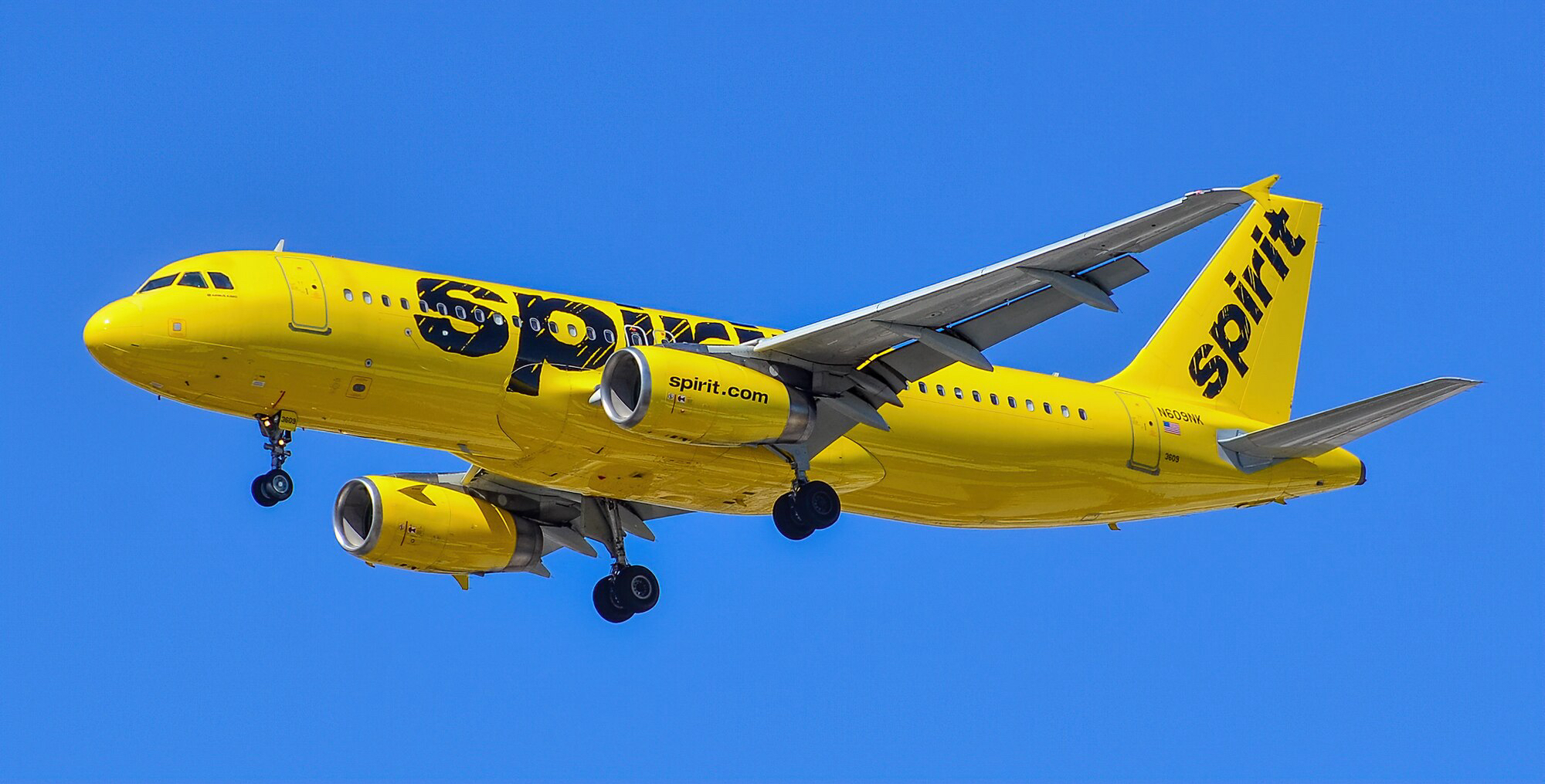Incident Summary
On 27 April 2025, a Spirit Airlines Airbus A320-200, registration N631NK, operating flight NK-332 from Philadelphia (PHL) to San Juan, Puerto Rico (SJU), was forced to divert to Bermuda (BDA) after a suspected fuel leak was identified at cruising altitude. The flight, carrying 115 passengers and crew, had been enroute over the Atlantic Ocean at FL330 approximately 150 nautical miles southwest of Bermuda when the flight crew reported a significant fuel leak from the right-hand wingtip.
In-Flight Decision and Crew Response
The flight had been operating routinely when the crew received indications suggesting a possible fuel imbalance or loss, later visually confirmed as a leak near the right wingtip. Upon consulting with dispatch and referencing onboard systems, the pilots declared the situation to Air Traffic Control and opted to divert to the nearest suitable diversion airport—L.F. Wade International Airport in Bermuda.
The aircraft maintained cruising altitude while coordinating with Bermuda ATC, ensuring weather, runway length, and emergency services availability were appropriate for an immediate landing. Despite the nature of the incident, the crew elected to keep both engines operational until touchdown, ensuring full authority control and stability during descent.
Landing and Emergency Services Response
The aircraft landed safely on Bermuda’s runway 12 approximately 30 minutes after the diversion decision. After decelerating and vacating the active runway, the aircraft came to a stop where emergency services approached and visually confirmed an active fuel leak from the right-hand wingtip.
Following procedures, the flight crew shut down both engines to mitigate any ignition risk. They then requested external inspection support. Bermudian fire and rescue services reported visible signs of leaking fuel, but with no fire. The Spirit crew confirmed all fuel pumps had been switched off, and emergency responders noted that the leakage was abating. After the situation stabilised, the flight crew restarted only the left engine and taxied under its own power to the remote stand, where all passengers disembarked safely via air stairs.
Aircraft Status and Operational Recovery
A replacement aircraft, a Spirit A320-200N registered N970NK, was dispatched and later continued the journey to San Juan, arriving with a delay of approximately 13 hours.
The original aircraft, N631NK, remained grounded in Bermuda for detailed inspection and rectification. Technicians later confirmed that the leak was isolated to the outboard fuel vent assembly and had not reached any hot surface or ignition source. No further damage was identified, but the component was removed and replaced.
On 30 April 2025, three days after the incident, N631NK positioned from Bermuda to Fort Lauderdale (FLL), where it remains under continued observation and maintenance as of 2 May 2025.
Regulatory Oversight and Investigation
As per standard protocol, the FAA and Spirit Airlines’ maintenance quality assurance teams have launched an investigation to determine the root cause of the leak. Given that the aircraft was over international waters, Bermuda’s civil aviation authorities have also been notified, though no formal investigation has yet been opened on their side.
Spirit Airlines issued a brief statement confirming the incident, adding that the crew acted appropriately and followed all established procedures. “Safety is our top priority,” the statement noted. “Our pilots and operations teams responded promptly and professionally to an inflight technical issue. All passengers were re-accommodated and offered compensation for the delay.”
Context: Recent A320 Fuel System Incidents
Fuel leaks in the Airbus A320 family are rare but not unprecedented. Most documented leaks tend to involve fuel venting issues due to overfilling, damaged drain masts, or external mechanical impact. In this case, a leak from the wingtip could suggest a breach in the tank vent surge assembly, a component designed to relieve pressure during fuel expansion or overflow, especially during cruise.
While fuel venting is normal under certain flight conditions, any continuous leak visually observed during flight or descent is treated as a serious anomaly—particularly when it poses a fire risk. The presence of visible fuel egress during flight justified the crew’s diversion and activation of airport emergency response units.
Passenger and Crew Outcome
There were no injuries reported among the 115 occupants. Passengers remained calm throughout the descent, and crew members conducted standard briefing and reassurance protocols during the diversion. Onboard announcements were made in a timely and professional manner, with no need for evacuation upon landing.
Several passengers later reported the professionalism of the crew in managing the situation and praised the smooth landing and safe handling post-touchdown. No fumes were noted in the cabin, and cabin pressurisation was unaffected throughout the diversion.
Aircraft Background
Aircraft Involved: Airbus A320-200
Registration: N631NK
Operator: Spirit Airlines
Engines: 2 × IAE V2500
Year of Manufacture: 2012
Flight Hours: ~44,000 (estimated)
Flight Cycles: ~25,000 (estimated)
Configuration: 8 Big Front Seats / 174 Economy
This particular aircraft has had no significant fuel system issues recorded in previous service bulletins or maintenance events. However, an engineering review of fuel system maintenance logs is now underway.
Conclusion
This event underscores the importance of visual confirmation, fuel system integrity checks, and the decisive role of in-flight crew training in recognising and reacting to non-routine system failures. Although a diversion due to a fuel leak over the Atlantic could have escalated into a much more serious situation, the Spirit Airlines flight crew demonstrated professionalism and effective CRM (Crew Resource Management) in ensuring a safe outcome for all onboard.
Investigations are ongoing, but initial findings suggest the leak was isolated and contained without injury, damage to structure, or further operational hazard. The incident remains classified as a “serious incident” pending final analysis and will likely be referenced in future operational safety audits and engineering reviews.
Disclaimer:
This article is a factual reconstruction based on publicly available information from aviation authorities, official airline statements, and verified flight data. It is written in the style and structure of formal CAA and FAA reports. No speculation has been included. All times are local unless otherwise stated.
